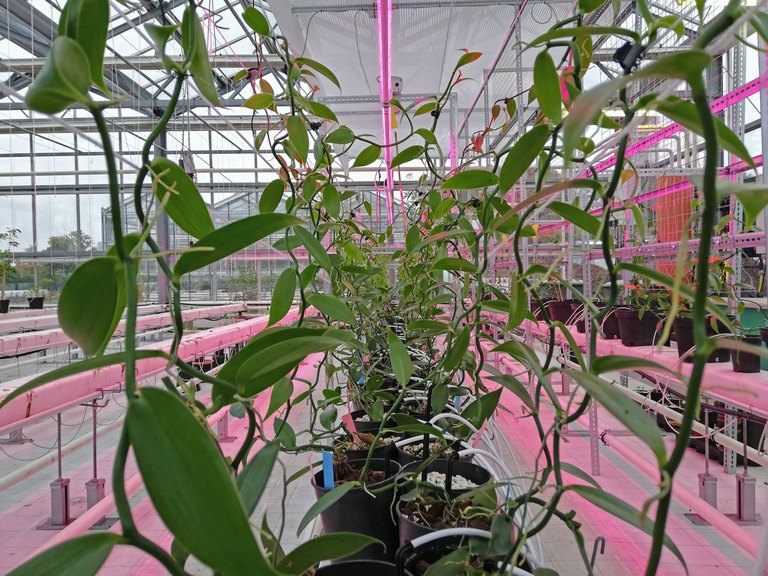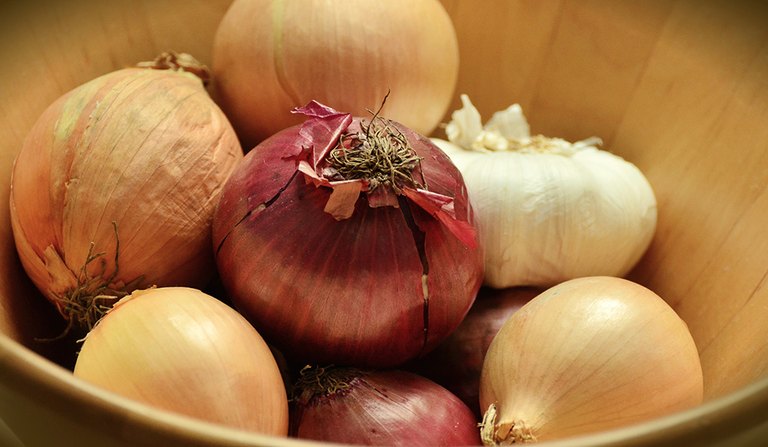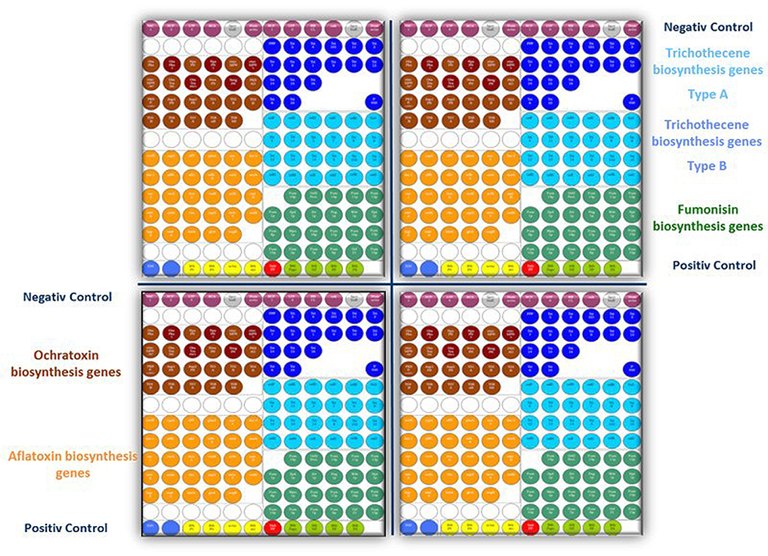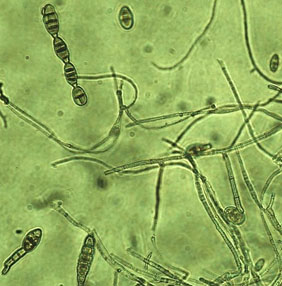In4Food

Indoor cultivation of high quality specialty plant crops
In the project In4Food, the Department of Safety and Quality of Fruit and Vegetables is working with partners from industry and research on the indoor cultivation of selected plants. The focus is on herbs and other raw material plants for flavouring food. In addition to optimizing cultivation parameters with regard to added value, quality and safety, the project aims to identify microorganisms that stimulate plant growth under indoor conditions. The work of the Department of Safety and Quality of Fruit and Vegetables focuses in particular on the plant borage, with the aim of reducing the levels of metabolites like pyrrolizidine alkaloids that are harmful to human health. In4Food is a project of the innovation space NewFoodSystems.
Iodine fortification of pickled cucumbers
![[Translate to English:] Frische grüne Gurken im Spülbecken](/fileadmin/_processed_/a/6/csm_Gurken_91188cbe52.jpg)
Influence on fermentation
Due to a limited and inconsistent data situation and resulting uncertainties regarding the iodine supply of the population, methods for the quantitative detection of iodine in different food matrices were developed at the Max Rubner-Institut and the influence of manufacturing and processing methods on the iodine contents in foods was investigated. In a sub-project, the Institute for Safety and Quality in Fruit and Vegetables dealt with the production of iodine-enriched pickled cucumbers.
Alternaria fungi on food
![[Translate to English:] Mikroskopische Aufnahme von Alternaria](/fileadmin/MRI/Institute/OG/Titelbild_Alternaria_Mikroskop.jpg)
What influences mycotoxin formation?
A considerable part of the annual world harvest is contaminated with fungal toxins, so-called mycotoxins, and should therefore be discarded. It is foreseeable that the spread and resistance of fungi will increasingly affect food production and consumer health in the future. Last but not least, climate changes are leading to increased infestation of crops by harmful organisms.
Promote availability of vanilla

Innovative cultivation techniques and systems for better yields
Vanilla, one of the most popular spices worldwide, is only available in limited quantities. In order to contribute to increasing the availability of high-quality vanilla, the research project “SustainVanil” pursues the goals of developing an innovative indoor farming system for the cultivation of vanilla in Germany and working out new approaches for solving problems in established vanilla cultivation in Madagascar.
Microgreens

Safety and quality
Under their new name "microgreens", plant seedlings, formerly called sprouts, are booming again. Due to their low growth height and short cultivation periods, MG are particularly well suited for cultivation in so-called vertical farming systems. Vertical farming refers to the cultivation of plants using the height/vertical, e. g. on several layers on top of each other.
Mycobiome analyses
![[Translate to English:] Pilzbefall auf Brot, Obst und Gemüse](/fileadmin/MRI/Institute/OG/Titelbild_Mykobiomanalysen_Pilzbefall.jpg)
Plant food safety assessment tools
Filamentous fungi are a fundamental component of the biosphere. As the second-largest group of organisms in the terrestrial biosphere in terms of numbers, directly after plants, fungi are responsible for a large number of important material transformation processes. Among other things, they break down organic material and thus make nutrients available to other living organisms.
Glyphosate exposure of study participants
Role of diet and gut microbiota
How much of the pesticide glyphosate do we ingest and what role does our diet play? These questions were answered by the Max Rubner-Institut (MRI) in a scientific, recently published study with over 300 male and female volunteers. In conclusion, the MRI scientists were able to show that the glyphosate exposure of the study participants was very low.
Microbial resveratrol metabolites
![[Translate to English:] Illustration der Ausscheidung im Urin](/fileadmin/_processed_/1/e/csm_Titelbild_ResMet_69829800ae.jpg)
Significance and bioactivity of resveratrol
Resveratrol (3,5,4'-trihydroxy-trans-stilbene) is a secondary plant compound found in grapes, wine, various nuts, cocoa products and more. Several health-promoting effects of resveratrol are discussed. After oral intake, resveratrol is either metabolized directly by the human intestinal microbiota or it is absorbed by the intestinal mucosa and subsequently metabolized by endogenous enzymes.
Innovation space NewFoodSystems

Research funding for new food systems
How will we feed ourselves as the world's population increases? What new protein sources can we use in view of the intensifying competition for agricultural land? Can, in the future, a health-promoting diet be realized with responsible consumption styles and production processes? Answers and solutions to these and other currently discussed questions about the nutrition of tomorrow are being researched in the innovation space NewFoodSystems.
Laser labeling

A new labeling method for fruit and vegetables
Where does the tomato come from? Is the cucumber organic or not? Was the banana really fair trade - or does it just happen to be among the FairTrade fruits? Questions like these are increasingly being asked by consumers when buying groceries. In order to meet this need for information, food today has to be well labelled. Because in addition to the visual impression, the taste or the health value, other product properties are often decisive for a purchase today. Important information relates to the place of production, the variety or the cultivation method. However, conventional information carriers such as packaging, bands or adhesive labels have certain disadvantages: they have to be recycled or disposed of, and bands and adhesive labels can also be lost. For this reason, alternatives are being discussed to permanently attach important product information to the food itself.
Project AflaZ: Zero Aflatoxin

A multidisciplinary cooperation project between German and African research institutions
A fungal toxin that is one of the most toxic natural substances is the subject of the international AflaZ cooperation project: Aflatoxin. The research work ranges from the infestation of maize plants in the field by aflatoxin-forming fungi, to insects that spread the fungal spores, to cow's milk in which toxic derivatives of aflatoxin are found.
FOODBALL

To investigate the relationship between diet and health in epidemiological studies, it is necessary to record food consumption as accurately as possible. Classical dietary survey methods are predominantly based on interviews with study participants and suffer from the associated inaccuracies such as incorrect estimation of portion sizes and incomplete information on consumed food.
Mycotoxin formation in food

Molecular monitoring
Mycotoxins are toxic secondary metabolites of fungi. They are not necessarily required for their growth, but it appears that they can promote adaptation to certain environmental conditions. Fungal infestation is not necessarily accompanied by mycotoxin formation. The challenge is therefore to identify the conditions that lead to active formation of mycotoxins in food.
Human pathogenic microorganisms in fresh plant produce

Vegetables and fruits are besides cereals the most important food produce of plant origin in Germany. Vegetable produce may come into contact with bacteria, viruses or parasites at various stages of the food chain from cultivation to transport to private households.
Potassium Supply of Tomato Fruit

In terms of consumption and economic relevance, the tomato is by far the most important vegetable crop in Germany and worldwide. Although the vast majority of tomato production takes place in the commercial sector, the cultivation of tomatoes is also very popular in home gardens. The diversity of varieties has increased noticeably in recent years.
ZwiebÖL: Onion landraces for organic farming

Due to its unique taste and scent, the common onion (Allium cepa L.) is the second most widely cultivated vegetable globally after the tomato. In Germany, onions are similarly popular. Onion bulbs contain high levels of plant secondary metabolites and fructans which are associated with health-promoting effects.
Storage-dependent changes of apple fruit quality parameters
Due to the different demands on the storage conditions all new varieties have to be examined in terms of temperature and atmospheric sensitivities to determine the optimum conditions for the preservation of fruit quality. Further, cultivation conditions may cause physiological damages like bitter pit.
Does a hot water treatment affect apple quality?

Depending on the cultivar and on the conditions, apples can be stored up to 10 months. However, a fungal infection before harvest may affect storability strongly by causing an early spoilage. This problem is especially relevant for organic cultivation where the application of synthetic fungicides is not allowed.
Ripening of Kiwifruits

Kiwifruits (Actinidia deliciosa) are steadily gaining popularity with consumers. Usually, fully developed fruits of the perennial vine are harvested unripe in the countries of origin – most commonly Italy, New Zealand and Chile. Thus fruits can withstand the long transport by ship and attain its maturity at the destination.
Healthy Vegetable
Substantial gourds for gardens in South East Asia
Cucurbits, especially bitter gourd (Momordica charantia) and pumpkins (Cucurbita moschata), are wide spread in vegetable gardens in Asia. As a supplier of essential nutrients (vitamins, minerals) and other valuable ingredients (secondary metabolites) they can provide a great contribution to food security and to avoid hidden hunger under the poor population.
Metabolomics
In recent years, metabolomics has developed into a key approach in modern life sciences. At the Max Rubner-Institute, the decision to establish metabolomics platforms in several departments (lead by the Department of Safety and Quality of Fruit and Vegetables) was made in 2010. The aim of this initiative is to enable cutting-edge research in the fields of food safety and food quality as well as health-oriented nutrition research in the mid-term.
HORTINLEA – a joint project with East Africa on the field of global food security

The aim of this project was to improve the livelihood and nutritional situation in urban and peri-urban areas in Kenia and adjacent areas in Tanzania and Ethiopia. The main focus lied on increasing production and supply of indigenous African vegetables and to improve efficiency of the respective value chain.
Innovative strategies to reduce mycotoxin contamination

Mycotoxins are toxic metabolites of filamentous fungi and pose a crucial problem for the safety of many food and feed products. According to current estimates, well over 25 percent of the annual world harvest is contaminated with mycotoxins and should be discarded.
Cellular regulatory pathways in fungi

What does stress have to do with mycotoxins?
Filamentous fungi are important spoilage organisms of fruits and vegetables. It is estimated that well over 25 percent of the world's annual harvest is lost to fungal contamination. To make matters worse, many species of fungi are capable of producing secondary metabolites, such as certain antibiotics and toxins (mycotoxins).



